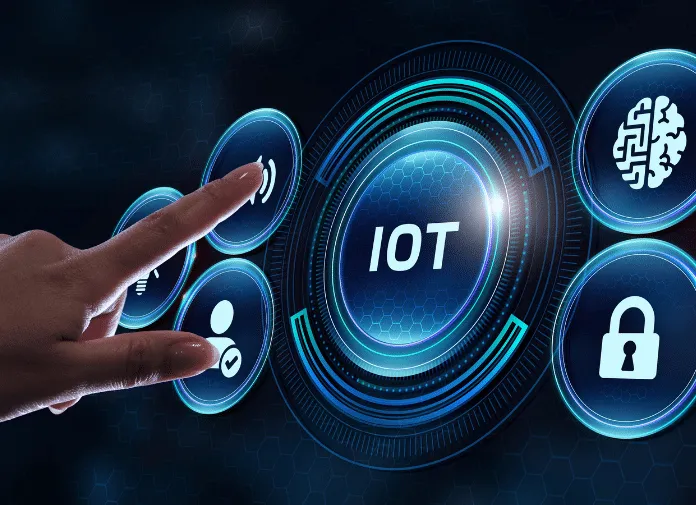The Internet of Things (IoT) spans everything from wearable health trackers to industrial sensors, promising smarter homes, faster supply chains, and real-time data on an unprecedented scale. This interconnection brings tangible advantages—utility grids can adjust to demand fluctuations, farmers can automate irrigation, and consumers can remotely control their appliances. Yet with these opportunities come serious security challenges. The very nature of IoT means that small, often low-power devices handle sensitive data or manage mission-critical processes, creating an environment where vulnerabilities abound and consequences can be immense.
Much of the early IoT market thrived on innovation over caution. Device manufacturers rushed out “smart” gadgets—light bulbs, thermostats, door locks—eager to capitalize on novelty. In many cases, these products featured default or hardcoded passwords, weak encryption, or incomplete security testing. Once installed in homes or offices, they were rarely updated, leaving them exposed indefinitely. Criminals found easy pickings, using these devices to form giant botnets or as stepping stones to infiltrate broader networks. High-profile attacks like the Mirai botnet in 2016 underscored how quickly large numbers of unsecured IoT devices can be marshaled into disruptive distributed denial-of-service (DDoS) campaigns.
Part of the risk lies in the diversity of IoT. A connected surveillance camera has different hardware constraints than a heart rate monitor or a factory robot. Some run on small microcontrollers with limited computing resources, making advanced encryption or frequent firmware updates impractical. Others rely on custom protocols that fall outside standard security scanning tools. Additionally, the supply chain for many IoT products spans multiple manufacturers, each handling specific components or software modules. If even one vendor overlooks a vulnerability, the entire product becomes at risk. From a defender’s viewpoint, securing IoT involves not just patching operating systems but also addressing hardware design, networking protocols, and cloud integration.
Users often lack awareness about the intricacies of these devices. Many assume that because a gadget is on a store shelf, it has passed relevant safety checks—yet consumer IoT often has no universal security standard. Installing a new doorbell camera, for instance, might require connecting it to the home’s Wi-Fi, forwarding certain ports, and signing into a proprietary cloud service. Each step could introduce new vulnerabilities if poorly configured. Even if the vendor’s instructions are correct, users may skip important details or reuse weak credentials. This dynamic yields an environment where compromised IoT devices offer attackers stealthy footholds in personal networks.
Industrial IoT (IIoT) raises the stakes even higher. In advanced manufacturing plants, sensors measure production metrics, robotic arms handle precise assembly tasks, and connected control systems orchestrate entire lines. A single sabotage or infiltration can halt operations for days, causing major financial losses or safety hazards. Utilities, power grids, and water treatment facilities rely on telemetry from IoT sensors for operational awareness. If manipulated, these data feeds could lead to catastrophic decisions—like releasing too much water from a reservoir or cutting off electricity unexpectedly. Modern critical infrastructure thus straddles a line between enhanced efficiency and pervasive vulnerability.
Recognizing the dangers, regulators have begun pushing for stricter guidelines. In the United States, the IoT Cybersecurity Improvement Act requires minimum security standards for devices sold to federal agencies, including the elimination of default passwords and the provision of patch mechanisms. Europe’s ENISA (European Union Agency for Cybersecurity) promotes recommended practices for IoT developers, while countries like the UK have floated legislation that mandates unique default passwords and clear update policies for consumer gadgets. Although these initiatives signal progress, they remain piecemeal—IoT vendors can still launch products without robust certifications unless they specifically target regulated sectors.
Leading security frameworks emphasize a “secure-by-design” philosophy. Rather than treating security as an afterthought, developers must embed it from the outset. This entails using hardware with secure boot capabilities and a trusted execution environment, ensuring that firmware updates are both signed and delivered over encrypted channels, and isolating key functions so that if one module is compromised, the entire device isn’t lost. Meanwhile, identity and authentication best practices (unique device credentials, multi-factor for administrative tasks) should apply to IoT as much as they do to traditional computers. The challenge, of course, is that IoT margins can be slim, with vendors pressured to minimize costs and push products to market swiftly.
Patching remains a central dilemma. IoT devices can number in the millions, scattered worldwide with varying degrees of connectivity. Some might be installed in remote pipelines or inside building walls, receiving minimal oversight. Rolling out updates to each device requires stable connectivity, a robust distribution mechanism, and a fallback plan if an update fails mid-installation. Vendors that do support updates often stop after a short product lifecycle, effectively ending security patches. Users, left with outdated firmware, risk turning their devices into permanent vulnerabilities. Advocates for IoT security stress long-term support commitments—if a device will likely be used for a decade, its vendor must plan how to keep it secure over that time.
Another dimension involves data ethics and privacy. IoT devices gather vast amounts of intimate information—location data, health metrics, usage patterns, personal preferences. Attackers targeting these devices might not just aim for sabotage but also for intelligence gathering. A burglar who gains access to a smart thermostat’s logs might deduce when the occupants are away, while corporate spies infiltrating industrial sensors can glean trade secrets from production volumes. Data streams traveling from sensors to cloud services must be protected with strong encryption, and user consent must be explicit about what’s collected, how it’s used, and how long it’s retained.
Industry collaboration can mitigate many of these risks. When major IoT platforms, chip manufacturers, and cloud providers unite around shared security protocols, it becomes easier for smaller vendors to adopt them. Public-private partnerships can fund pilot programs, testing new security approaches in controlled environments. Some of the most promising initiatives revolve around open standards. For example, the Matter specification aims to unify smart home ecosystems with consistent device identities and encryption, breaking down the proprietary silos that hamper security. However, the success of such efforts hinges on broad adoption by a critical mass of market players.
In parallel, threat intelligence tailored to IoT is gaining traction. By analyzing global data on newly discovered vulnerabilities or exploits, security researchers can warn device owners to isolate or patch certain product lines. Over time, one can imagine automated systems that quarantine suspicious devices on a home or industrial network, scanning them for malicious behavior. Zero trust philosophies, already influential in enterprise cybersecurity, may extend to IoT—every device must prove its identity and demonstrate that it’s operating within expected bounds, or else face restricted network privileges. Though feasible in theory, implementing zero trust at scale for numerous resource-constrained devices remains a steep technical undertaking.
Governments, too, grapple with broader implications. A large-scale IoT botnet launched by a nation-state could disrupt entire swaths of internet infrastructure. Compromised medical devices could threaten hospital patients directly, crossing ethical and humanitarian boundaries. Policies might push for mandatory killswitch capabilities, letting authorities or manufacturers forcibly disable compromised devices during a crisis. Critics worry about abuses of such power or the risk that criminals might hijack the killswitch itself. Balancing public safety against user autonomy proves no simpler in IoT security than in any other domain of cybersecurity.
While these challenges sound daunting, progress is evident. More manufacturers are embracing secure design practices, adopting hardware root of trust or shipping with unique per-device credentials. Some are even giving users routine reminders about updating firmware and changing default settings. The open-source community fosters free security tools that can be embedded into IoT device code. Tech giants release patches for widely used IoT operating systems or platforms, helping standardize defenses. Encouragingly, stories of compromised baby monitors or hacked smart TVs have spurred consumer awareness, making security features a selling point rather than a hindrance.
Ultimately, securing the IoT demands a multifaceted approach. Vendors must align hardware, software, and connectivity with robust security principles while ensuring consistent updates. End users, whether homeowners or industrial engineers, must develop basic cybersecurity habits—scrutinizing device setup, rotating credentials, and segmenting networks to limit damage if a single device is compromised. Policymakers and regulators can incentivize compliance and transparency, while research communities provide guidance on emerging threats. None of these efforts alone can seal every crack in the IoT. Yet, in unison, they form an evolving shield against the misdeeds of hackers, corporate espionage, or sabotage attempts.
As billions more devices join the network, from factory floors to city intersections, the stakes will only rise. The challenge of balancing IoT’s potential for innovation with the inherent security risks may define a generation of cyber defenders and product designers alike. Those who embrace secure development lifecycles, accountability throughout the supply chain, and resilient design concepts stand a strong chance of reaping IoT’s transformative benefits—without succumbing to the dark side of unchecked connectivity. Conversely, ignoring these imperatives invites more botnets, data theft, and potential public safety hazards. A safer IoT world hinges on vigilance, collaboration, and a willingness to break from the short-term mindset that once propelled cheap, insecure gadgets to market dominance.


